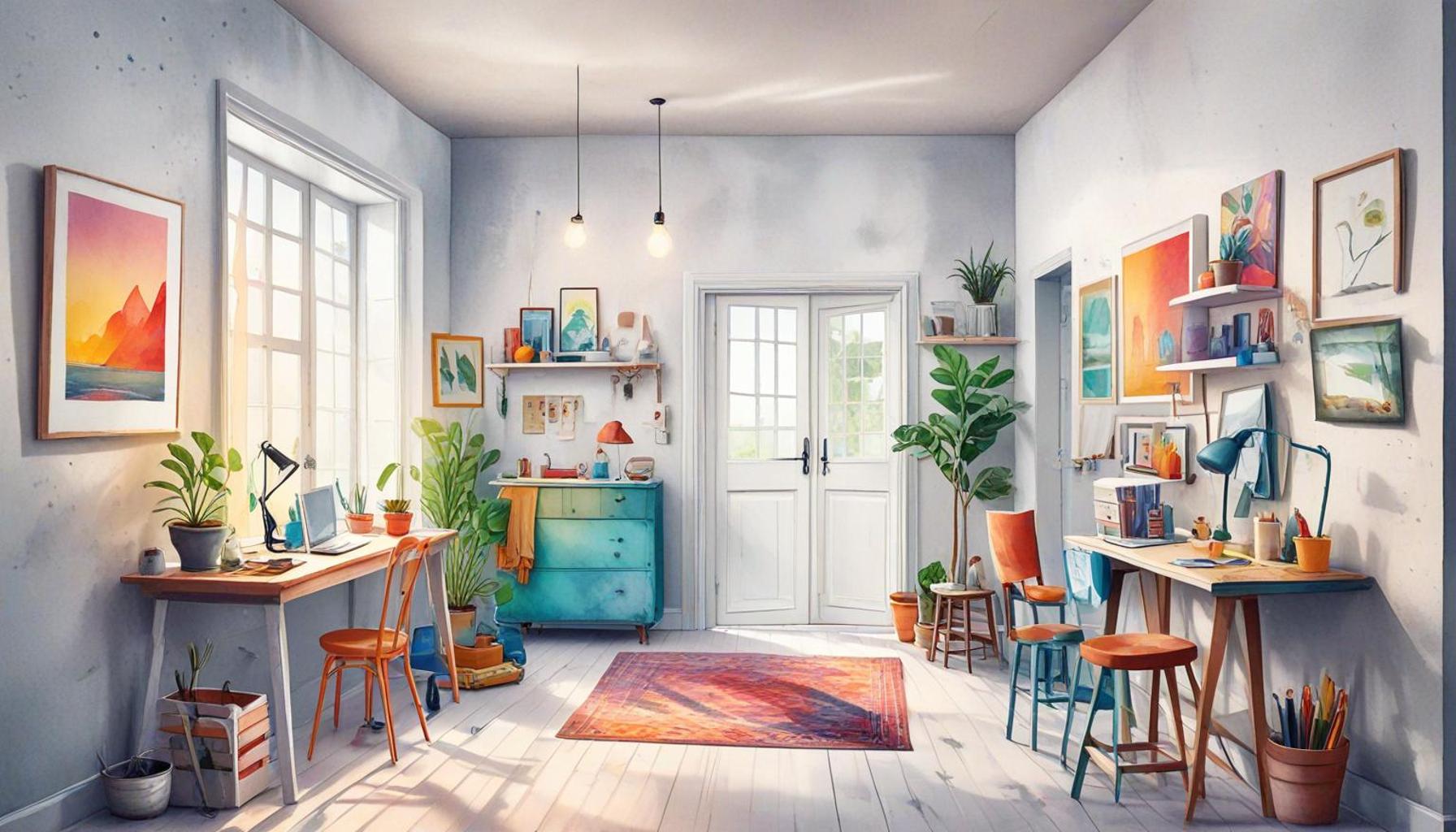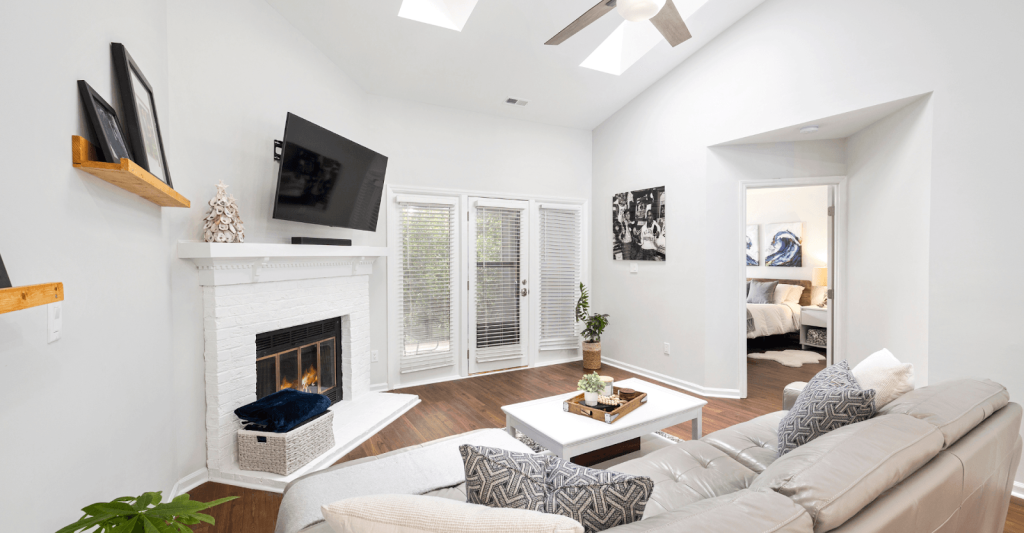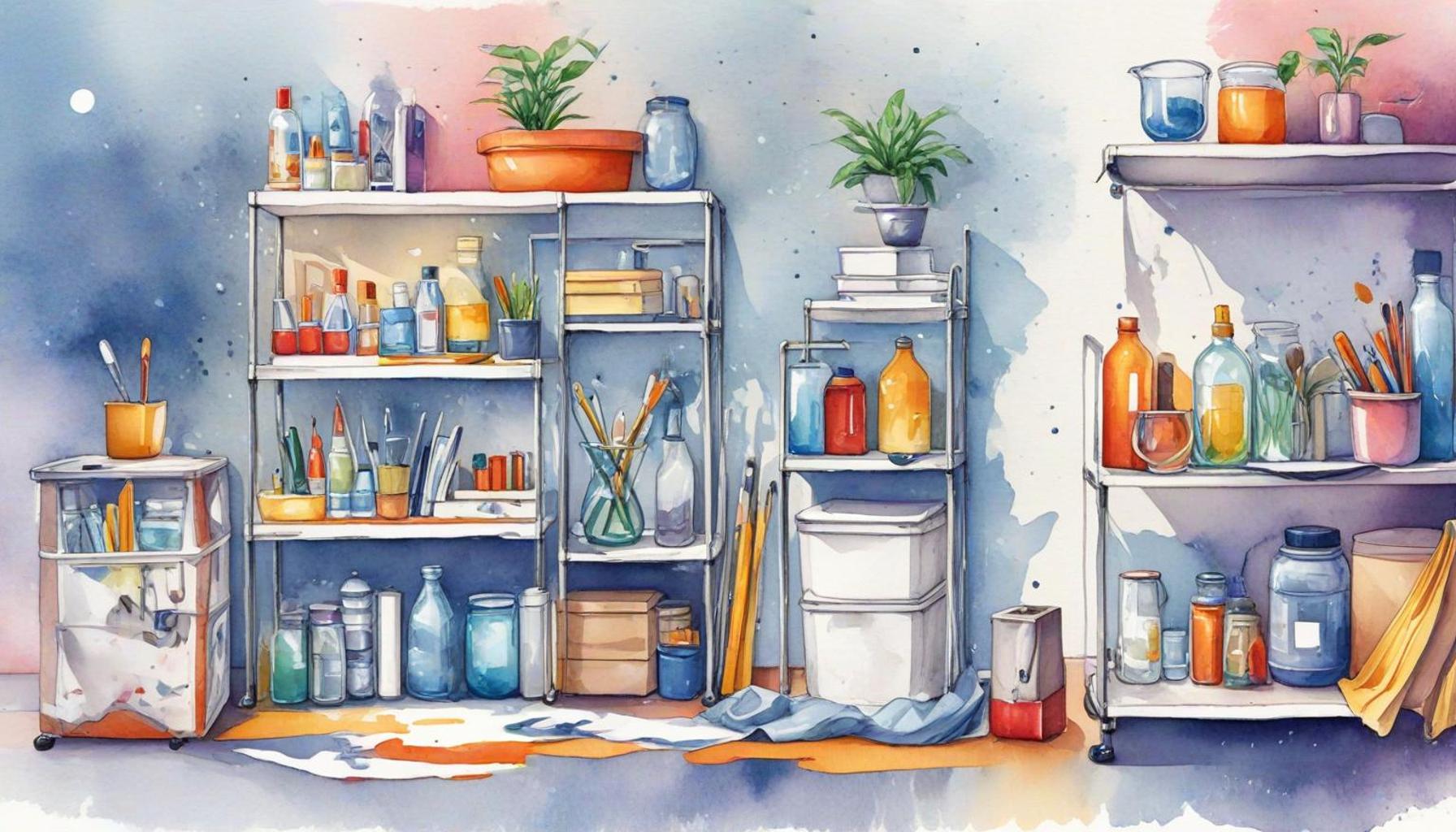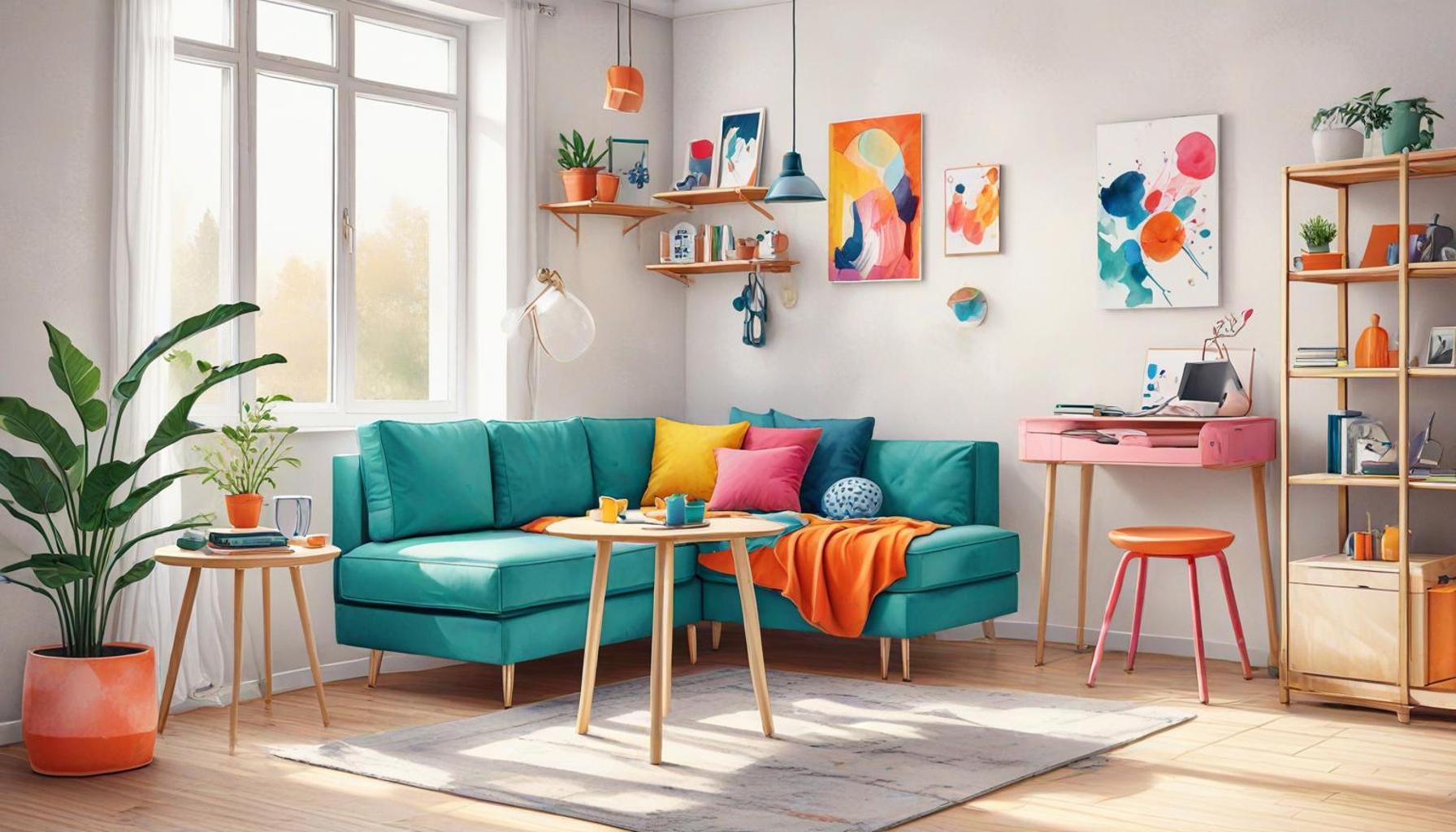Mastering Small Space Design Creative Solutions for Minimalist Living

In a world that increasingly values minimalism and streamlined living, the way we design and utilize small spaces has taken center stage. The shift towards smaller living environments demands a fresh perspective on organization and aesthetics, pushing us to rethink how we can maximize our surroundings without compromising comfort or style. This article dives into innovative strategies that transform compact areas into functional and inviting havens.
Embracing minimalism is not only about reducing clutter; it is also about creating environments that support a simplified lifestyle. Here are some key aspects to consider:
- Functionality: Every inch matters in a small space, so solutions should prioritize efficiency.
- Creativity: Imaginative designs can change perceptions and make limited spaces feel expansive.
- Emotion: A well-organized environment fosters peace of mind and enhances the quality of living.
As you explore the Top 5 creative solutions for small space design, be prepared to uncover practical ideas that might just change your living experience. Let’s delve into the world of minimalist living and discover how to make small spaces feel larger than life.
DISCOVER MORE: Click here to simplify your daily agenda
Top 5: The Art of Maximizing Small Spaces – Creative Solutions for Minimalist Living
In today’s urbanized world, living spaces are shrinking, and the ability to maximize every inch of space has evolved from mere choice to necessity. This transformation has birthed a creative and resourceful approach towards minimalist living. Minimalism emphasizes focusing on what truly matters, allowing us to declutter our lives while creatively optimizing the area we inhabit. With real estate prices soaring and living spaces becoming ever more compact, individuals are embracing innovative solutions to make their homes both functional and aesthetically pleasing. Here are the top five strategies to optimize small living areas, each offering unique and ingenious ways to breathe life into compact quarters.

5. Multipurpose Furniture
In the dance of functionality and aesthetics, multipurpose furniture takes center stage. This clever innovation serves several functions within a single piece, allowing homeowners to exploit space without accumulating clutter. Consider the bewitching versatility of a sofa bed. By day, it serves as a cozy couch; by night, it unfolds into a comfortable bed for guests. Similarly, a storage ottoman does not merely provide seating but doubles as a discrete space to hide blankets, books, or even workout gear.
- Sofa beds: Seamlessly transform a common area into a guest-friendly zone.
- Storage ottomans: Combine style with function by concealing everyday clutter.
- Expandable tables: Adapt to the situation, extending to accommodate guests and retracting when not needed.
Embracing multipurpose furniture is like adding a layer of adaptability to your living space, ensuring your home remains agile and stylish as your needs evolve.
4. Vertical Storage Solutions
When square footage isn’t in abundance, look upwards; the walls hold an untapped reservoir of potential. Vertical storage solutions such as shelves, cabinets, and hooks enhance organization without infringing on valuable floor space. Wall-mounted shelves are perfect for showcasing books, art, or greenery—adding character while conserving space. Pegboards serve as dynamic canvases for arranging tools, utensils, or craft supplies, making them both accessible and organized.
- Wall-mounted shelves: Display and store items high up, freeing the ground.
- Pegboards: Offer versatile arrangements for tools and utensils in any room.
- Over-the-door organizers: Capitalize on every nook by utilizing door space for storage.
These vertically inclined solutions not only enlarge your available storage area but also contribute to the room’s visual harmony. By drawing the eye upward, they create an illusion of more expanse, making any compact area feel larger.
3. Smart Use of Color and Light
The right use of color and lighting can make a confined space feel open and inviting. Light hues, particularly whites and pastels, reflect natural light, amplifying the sense of space and airiness. These colors may not appear dramatic, but they quietly enlarge the sense of the room. Thoughtful lighting techniques, such as strategically placing mirrors, can also enhance the spatial illusion by bouncing light around the room.
- Light colors: White, soft grays, and pastels expand the visual boundaries of a room.
- Mirrors: Positioned opposite windows to reflect natural light and widen the room.
- Layered lighting: Between ambient, task, and accent lighting, create depth and dimension.
With well-planned color schemes and lighting, a small area can morph into a vibrant living environment, one that feels as expansive as it is cozy.
2. Built-In Storage
Customizing built-in storage is akin to outfitting your home with a bespoke suit. Designed precisely for the available space, built-ins like shelves or cabinetry exploit every nook and cranny, including those awkward corners often left unused. An under-stair area, for instance, can be transformed into a series of hidden compartments or a book nook. Built-in window seats not only offer a quaint reading spot but lift to reveal additional storage.
- Under-stair storage: Ingeniously utilizes hidden spaces for discreet storage.
- Window seats with storage: Provides cozy seating and concealed storage.
- Custom cabinetry: Tailored to fit and enhance unique room dimensions and needs.
These built-in solutions don’t just declutter your space; they also create a visual continuity that enhances the fluidity and sophistication of your living area.
1. Decluttering and Simplification
At the heart of minimalist living lies the principle of decluttering and simplification. Evaluating possessions and retaining only those that bring joy or utility is foundational to space optimization. The “one in, one out” philosophy encourages a mindful approach toward acquisitions—each item added requires one to be donated or discarded, reducing accumulation. This ongoing practice nurtures a lifestyle that melds with minimalist philosophy, ensuring every belonging is purposeful and appreciated.
Regular reassessment of belongings helps maintain an environment that feels open and serene. By relinquishing the surplus, space is carved out for movement, creativity, and calm. The simple act of decluttering can transform a cramped area into a tranquil haven and create a more thoughtful, environmentally conscious way of life.
In conclusion, maximizing small spaces is a tapestry woven from creativity, purpose, and mindfulness. Through strategies like multipurpose furniture, vertical storage, skillful use of color and light, custom built-ins, and regular decluttering, smaller homes can transcend their physical limits. Rather than being constrained by square footage, these solutions encourage living expansively, emphasizing that even the smallest of spaces can be abundant with opportunities for innovation and comfort.
| Category | Details |
|---|---|
| Multifunctional Furniture | Pieces designed to serve multiple purposes, such as sofa beds or ottomans with storage, allow for optimal use of limited space while maintaining style. |
| Vertical Storage Solutions | Utilizing wall-mounted shelves and over-the-door organizers maximizes available height in small spaces and keeps the floor area clear for movement. |
| Light Color Palettes | Incorporating light hues can enhance a sense of openness, making small areas feel larger and more inviting, while also reflecting natural light for added brightness. |
| Smart Technology | Innovative gadgets, like compact smart home devices, can streamline living in tight quarters, integrating functionality while saving room for essential everyday items. |
Exploring the subtle yet impactful ways to optimize space reflects a growing trend in interior design, particularly as urban environments present mounting challenges of limited living areas. Each solution serves as a reminder of the beauty that can emerge from constraints, encouraging creative problem-solving in our surroundings.Multifunctional furniture not only stands as an essential component in small spaces but also epitomizes modern design principles that appreciate versatility. For instance, a coffee table that transforms into a dining table can be the perfect answer for those seeking to entertain in confined quarters.Moreover, vertical storage solutions efficiently redirect our organizational strategies, compelling us to look upwards instead of horizontally. The addition of wall shelves or bookcases enhances the aesthetic appeal while preserving functional integrity, enriching both decor and practicality.Utilization of light color palettes shifts the architectural narrative, as soft tones blur the silhouette of walls and furniture, expanding visual horizons. This idea resonates particularly in urban settings, where light becomes a rare commodity to be cherished.Lastly, the advent of smart technology introduces a forward-thinking dimension to small spaces. By employing space-efficient smart devices, one can simultaneously gain utility and simplicity, ensuring that even the smallest areas embrace a modern edge without overwhelming the essence of minimalism. Finding balance between aesthetic appeal and functional designs nurtures a harmonious living environment, ultimately igniting curiosity around how to make the most of what we have.
DIVE DEEPER: Click here for essential wardrobe tips
Frequently Asked Questions: Mastering Small Spaces
How can I make a small room look bigger without renovations?
One of the most effective ways to make a small room appear larger is by employing strategic use of mirrors. Mirrors reflect light and create the illusion of depth, instantly enhancing the perceived size of the space. Additionally, choosing a light color palette for your walls, furnishings, and decor can further give an airy and expansive feel. Opt for furniture with legs exposed, so they don’t block the visual flow, and consider using multi-functional pieces such as a bed with built-in storage underneath.
What kind of furniture is best suited for small spaces?
In compact areas, furnishings that adapt to multiple uses can be a game changer. Consider investing in multi-purpose furniture like sofa beds, extendable dining tables, and storage ottomans. Wall-mounted desks or folding tables can provide workspace without permanent commitment, saving valuable floor area. The key is to select items that offer flexibility without sacrificing style or usability. Don’t forget to measure your space before purchasing to ensure a perfect fit.
Are there any design tricks for adding storage in a minimalist environment?
Absolutely. Storage solutions in minimalist environments often rely on clever integrations. Use vertical space by installing shelves closer to the ceiling to draw the eye upward and utilize the full height of the walls. Look for storage solutions that seamlessly blend in, like built-in wardrobes or benches that double as storage compartments. Additionally, choosing furniture with hidden storage capabilities can help maintain the minimalist aesthetic while keeping clutter out of sight.
What lighting options work best to maximize small spaces?
Lighting plays a crucial role in shaping how a space feels. In small areas, layered lighting is effective, combining ambient, task, and accent lights to create depth and warmth. Opt for wall sconces or pendant lights that free up valuable floor and table space. Consider using LED strips under cabinets or shelves for a soft glow that highlights certain areas without overwhelming the senses. Smart lighting solutions that can change color and intensity also allow for flexible use of a small room.
How can I maintain a clutter-free environment in a small home?
Maintaining a clutter-free environment starts with adopting a mindful organization system. Regularly declutter by evaluating the necessity of each item, keeping only what serves a purpose or brings joy. Use categorized storage bins and labels to make finding and storing items effortless. Digital organization tools or apps can keep track of what you own, helping you avoid over-purchasing. Routinely assess your belonging’s necessity to prevent accumulation, ensuring your small space remains tidy and functional.
DISCOVER MORE: Click here for tips on achieving a serene space
Conclusion: The Art of Maximizing Small Spaces
In a world where minimalism and personal organization are becoming increasingly important, the art of maximizing small spaces has never been more relevant. Throughout this article, we’ve explored how creative solutions can transform even the most cramped environments into functional, stylish, and serene retreats.
Key Takeaways
Firstly, it’s crucial to prioritize essential items and make use of multifunctional furniture. A one-piece serving multiple purposes can significantly free up space. Secondly, vertical storage solutions and smart shelving can convert walls into storage areas, keeping the floor clear and spacious. Thirdly, the strategic use of mirrors and lighting can give the illusion of a larger area, creating an open and airy feel.
Moreover, embracing the principles of minimalism means intentionally decluttering and prioritizing possessions, which not only redirects focus to what truly matters but also creates a peaceful living environment. Implementing these strategies results in homes that are not only well-organized but also aesthetically pleasing.
The Importance of Minimalism
The importance of maximizing small spaces extends beyond mere aesthetics. It is about enhancing our quality of life and mental well-being by fostering environments that encourage clarity and serenity. Minimalism is not just a trend; it’s a lifestyle choice that complements modern living constraints and values. By valuing intention over abundance, individuals can cultivate a personal sanctuary that mirrors their ideals and priorities.
Ultimately, whether you are motivated by necessity or choice, the pursuit of creating functional and beautiful small spaces is a meaningful endeavor. It invites us to look at our surroundings with fresh eyes and create homes that truly reflect our personal values and aspirations.



